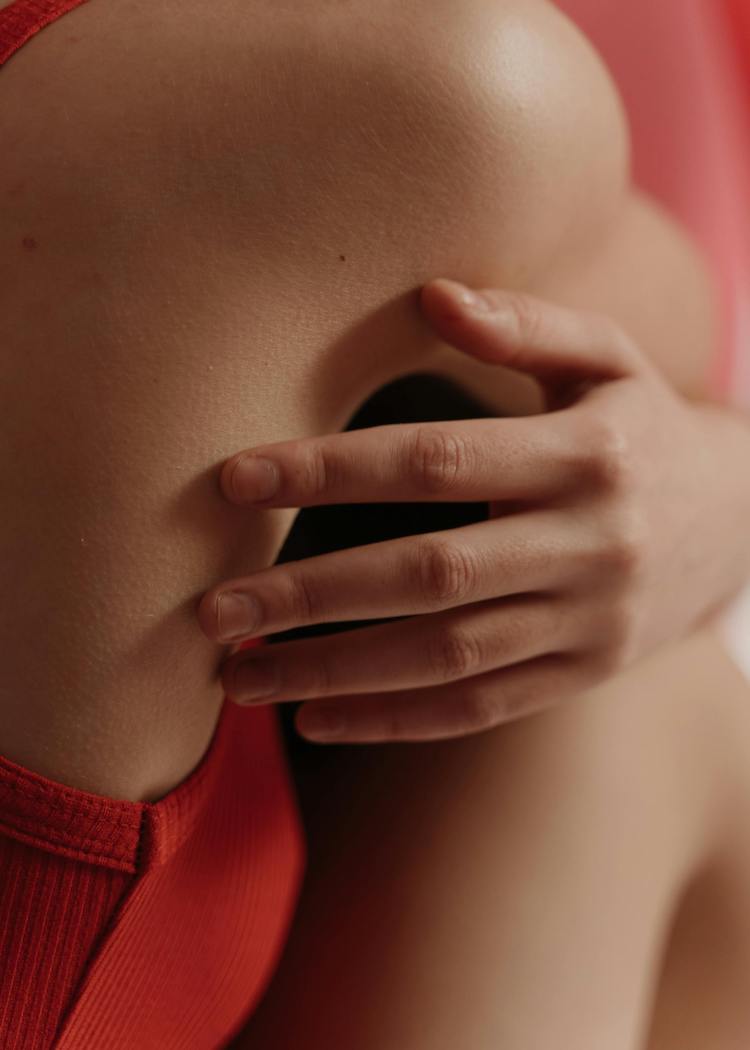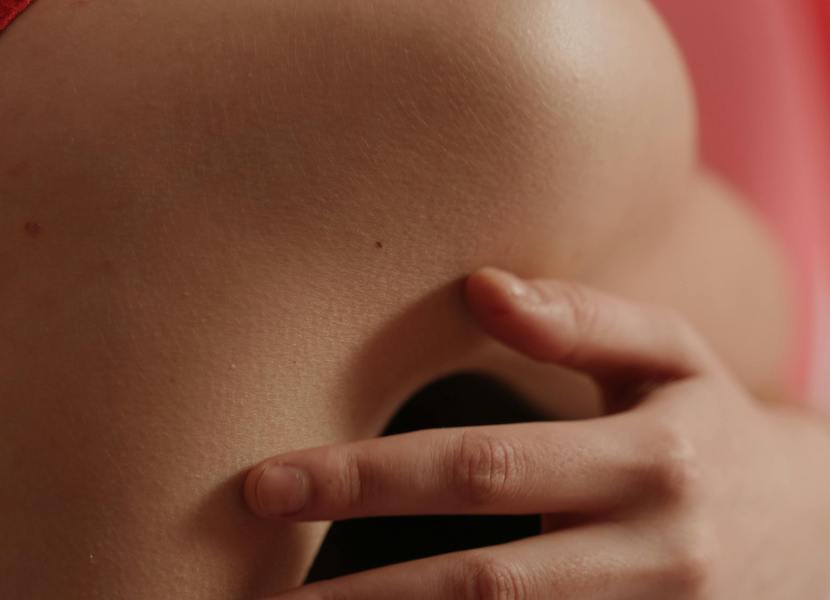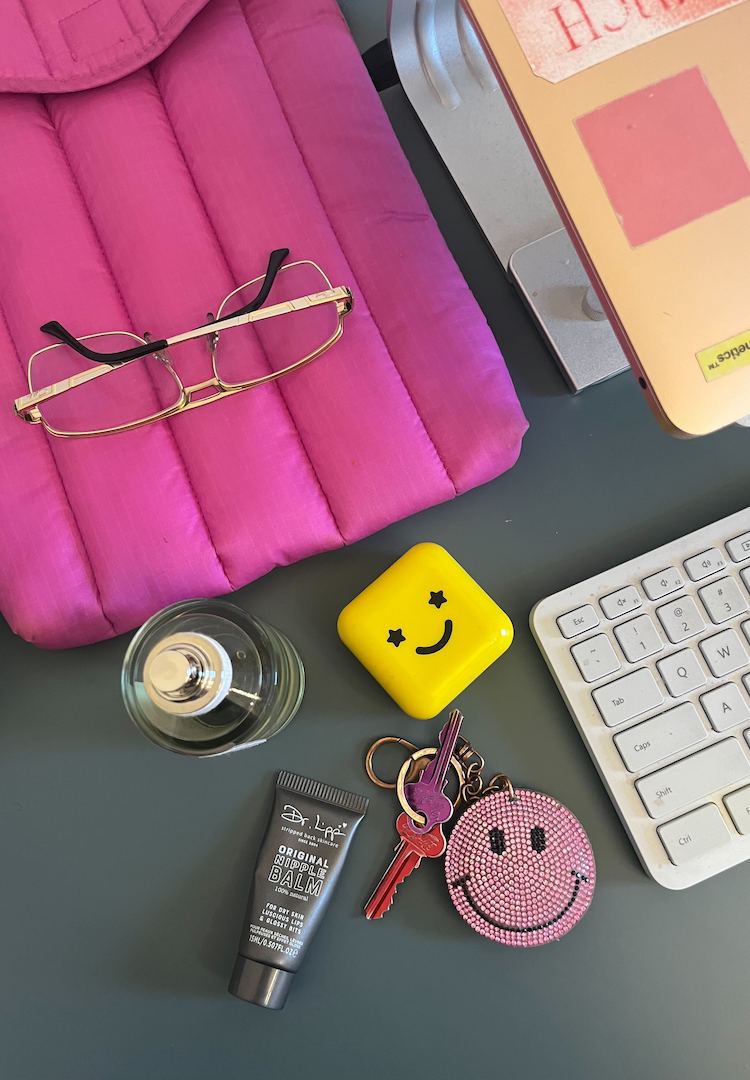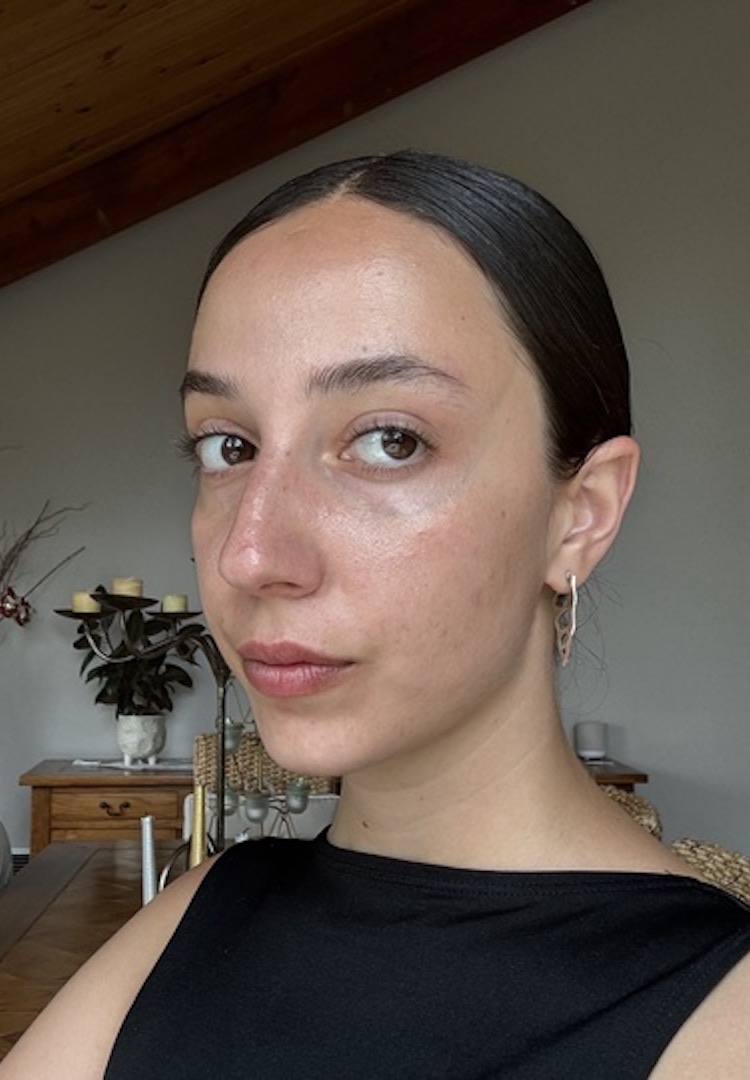What is keratosis pilaris and how can you manage it?
WORDS BY ELLY SHINKFIELD
A doctor’s advice on dealing with pesky ‘chicken skin’.
I was eight years old when I first noticed the skin on my arms and legs was different from those around me. While all the kids in my class had smooth, seemingly flawless skin, mine was covered in what looked like red, rashy pimples.
I was distraught and embarrassed and I spent the next ten years of my life covering myself up in layers of clothing (even in the middle of summer) or body makeup to hide my spotty arms and legs.
Looking for more skincare recommendations? Head over to our Beauty section.
After almost five years of trying everything under the sun to ‘fix’ my skin, my mum took me to see a dermatologist and I finally had a diagnosis – keratosis pilaris, also known as ‘chicken skin’. A quick Google search characterised it as a skin condition that looks like visible bumps on the skin resembling goosebumps or pimples.
Unfortunately, there’s no cure for keratosis pilaris, but there are ways you can reduce the intensity of it. To find out more about this skin condition and how you can manage it, I reached out to Dr Katherine Armour, dermatologist and Founder of Bespoke Skin Technology.
What is keratosis pilaris?
Dr Katherine tells me that keratosis pilaris is an inherited condition where “the skin becomes slightly stickier and more prominent around the very fine hair follicles in a genetically determined distribution”. It most commonly affects the upper outer arms, thighs and buttocks areas of the body but there are less common variants of keratosis pilaris that will affect the cheeks and the eyebrows.
Dr Katherine explains that keratosis pilaris will often appear as “very small, whitish or white with a red halo bumps in the affected areas”, causing the skin to “feel a little bit rough and bumpy to the touch”. The skin behind keratosis pilaris bumps will often look redder than the surrounding skin. There is a “great diversity in how severe it is”, with some individuals having cases so mild that they might not even notice it.
The symptoms
Thankfully, keratosis pilaris is a particularly asymptomatic skin condition. However, Dr Katherine tells me the severity of it can have an impact on a sufferer’s overall quality of life as it can negatively impact self-esteem levels. This was true for me. When my keratosis pilaris was at its most severe, my self-esteem plummeted and I found myself avoiding leaving the house to hide my skin from my peers.
Dr Katherine informs me that when keratosis pilaris appears on the face, people may experience their skin “feeling quite hot and burning because when keratosis pilaris is on the face it’s often associated with severe redness”.
What causes it?
To my surprise, she tells me it’s a very common condition as it’s “autosomal dominant, meaning that if one of your parents has it, you have up to a 50 per cent chance of developing the condition”. Dr Katherine informs me it will often worsen during the winter season as the skin naturally becomes drier with the colder weather, causing it to “look more obvious and feel rougher and bumpier”.
Keratosis pilaris is a permanent condition, however, luckily for us, it’s “often more prominent in childhood and in teenagers and often becomes much better with age”. Dr Katherine also has a personal story about the condition. Similarly to me, she developed it in childhood and explains that hers “is so subtle now, you almost can’t even see it”.
This is something I noticed for myself as well. When I was a kid it was quite severe and I resorted to applying body foundation daily to reduce the harsh redness up my arms and legs. Now that I’m 24, my keratosis pilaris is almost non-existent and I’d have to actively be looking for it to even notice it at all.
How can you reduce the severity?
According to Dr Katherine, the easiest and most important thing you can do is to “moisturise your skin really well, every day”, because when the skin is dry, the bumps will look and feel worse. She highlights the importance of finding a moisturiser you like and applying it “all over your body every day after the shower or the bath” as it will “lock the moisture into your skin much more effectively”.
Over-the-counter or prescription topical treatments can be used to smooth out the bumps on the skin. She tells me that treatments containing alpha hydroxy acids (AHAs) are worth trying, as these will help smooth out the “prominent skin that causes the bumps”.
It’s important to note that AHAs can cause slight stinging and discomfort while your skin gets used to them. She recommends “using treatments two or three times a week and then gradually building up” or “applying a moisturiser first and then applying a body lotion with the alpha hydroxy acids over the top” to avoid irritation.
If these treatments don’t work, she suggests “applying a prescription like a topical retinoid, which either a dermatologist or a GP will prescribe you”. She adds that in more severe cases of keratosis pilaris, particularly on the face, sometimes she will use “vascular lasers to improve the redness in patients”.
Finally, it’s important to see a dermatologist to make sure you’ve got the diagnosis right so you’re given the correct treatment, as there are other conditions that may mimic keratosis pilaris.
To learn more about keratosis pilaris, head here.










